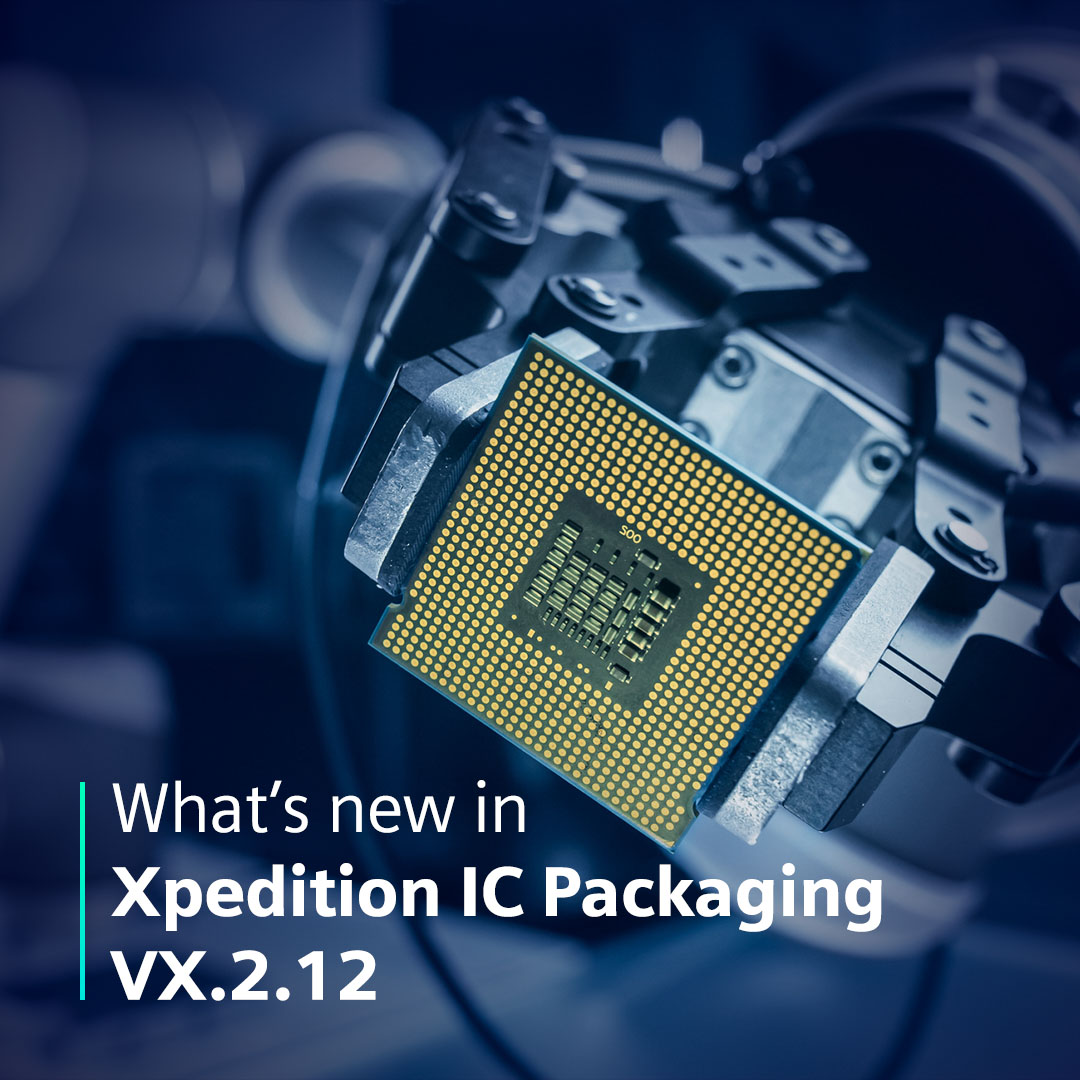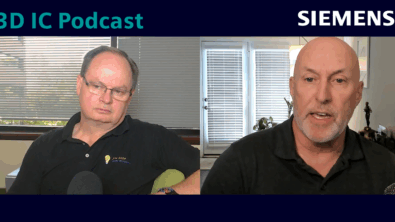What’s new in Xpedition Advanced IC Packaging release VX.2.12

The Xpedition high density advanced packaging solution it is made up of two core products, Xpedition Substrate Integrator (xSI) which is for constructing and optimizing complete package assemblies, which can include multiple ASIC, chiplets, discretes, interposers, packages, and even PCBs. Then there is Xpedition Package Designer (xPD), this is the detailed physical place and route tool, the packaging version of Xpedition Layout. xPD contains two other technologies, the first is HyperLynx DRC the second is HyperLynx FAST3D quasi-static field solver.
xSI is the data aggregator and performs initial placement of devices with bump/ball logic assignment and optimization. It supports and ECO flow with IC design tools to enable silicon-package co-design. It then feeds the optimized prototype into xPD for detailed physical implementation. This platform integrates with and leverages a very broad portfolio of Siemens technologies to achieve comprehensive verification all the way down to thermal analysis and thermally induced mechanical stress.
The new VX.2.12 release of Xpedition IC Packaging addresses the increasing complexity of today’s IC Packaging needs through four key areas of improvement: User defined automation, increased designer productivity, guidance driven design, and expanded tapeout capabilities.
User defined automation
To enable greater levels of user defined automation you can now add a pin, IO cells or bumps in the context of a package floorplan. This is very powerful when using Xpedition Substrate Integrator’s hierarchical device planning methodology where the modification to one hierarchical instance will automatically update all other instances.
You can now select objects by a coordinate window using object filters. This allows for the powerful selection and automation of objects.
Increased designer productivity
As part of the continuous efforts to improve user experience and boost user productivity, both the visualization and editing of component properties are now integrated into the centralized Property Window.
A solid ground return path is crucial for high performance differential signals. Inserting stitching vias close to the differential pair routes and at regular intervals ensures that the ground return paths continuity is maintained. This new level of automation increases the designer’s efficiency, allowing better performing results with less time and effort.
To truly model and verify a complete 3D package assemblies’ connectivity (LVS) you may need to understand & model any internal devices connectivity. A common challenge is designs with a very large number of power pins such as VDD where the signal may only enter a die/chiplet though a few pins but may exit the die through multiple pins. Without modeling the internal connectivity mapping the result of such a scenario is the LVS reporting of multiple false opens that could take hours to review and waive.
Very high-speed differential signals that transition rule areas require a more graduated transition to not significantly impact electrical performance. Tapered transitions enable this giving the designer more control and can be applied during multiple modes.
Guidance driven design
Guidance driven planning and interconnect optimization is key for developing a floorplan placement that will not cause late stage electrical or thermal issues. Early predictive analysis such as signal or power integrity or thermal simulation results can be imported into xSI to help guide the designer to make informed decisions that will help drive overall package optimization and prevent late-stage changes.
Expanded tapeout capabilities
Open Artwork System Interchange Standard (OASIS) is a hierarchical mask layout data format that yields much smaller file sizes than GDSII and is much faster to generate. It was introduced in VX.2.10, but its performance is improved in VX.2.12 with “smart fill” for very large designs that contain a lot of metal areas. Other capabilities include user control of more types of design objects that can be exported, and when using “wagon wheel” pads with outgassing voids any metal areas that may cover the voids are auto trimmed. OASIS is also now automation scripting enabled.
The new VX.2.12 release of Xpedition IC Packaging
VX.2.12 covers multiple areas that deliver increased designed productivity as well as advanced automated capabilities such as ground return path via stitching and differential pair tapered transitions. Overall VX2.12 provides considerable value across xSI and xPD. Download the release today.


